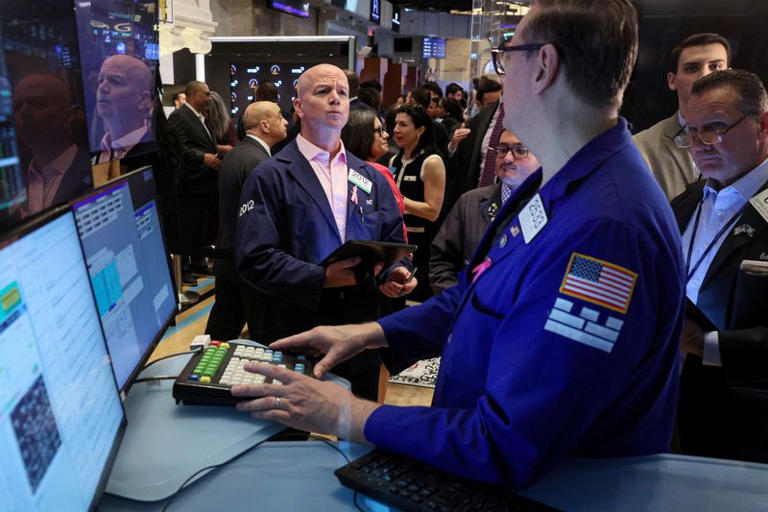Surge in U.S. Equity Fund Inflows Reflects Optimism Amid Cooling Consumer Prices and Robust Earnings
In a remarkable turn of events for the financial markets, U.S. equity funds have experienced substantial inflows in the week ending July 17. This influx of capital, amounting to $21.7 billion, is the largest weekly net inflow into U.S. equity funds since February 2021. This surge highlights growing investor confidence, fueled by a combination of cooling consumer prices and robust corporate earnings.
Market Drivers and Trends
The initial driver of this optimism was a series of favorable economic indicators. Earlier in the week, both the S&P 500 and the Dow Jones Industrial Average reached record highs. This positive movement followed a weaker-than-expected U.S. consumer price index (CPI) report from the previous week. The CPI data suggested that inflationary pressures were easing, which in turn spurred speculation about a potential interest rate cut by the Federal Reserve. This anticipation of a more dovish monetary policy helped drive significant investments into U.S. equity funds.
However, this upward trend faced challenges as the week progressed. On Thursday, the market saw a notable decline, driven primarily by a sell-off in the semiconductor sector—a critical component of the tech-heavy Nasdaq index. Additionally, investors began rotating away from mega-cap growth stocks, which had previously been the darlings of the market. This shift indicated a recalibration of investment strategies in response to evolving market conditions.
Impact of Corporate Earnings
Despite the volatility, the overall sentiment remained positive due to strong corporate earnings reports. Key contributors to this positive sentiment included UnitedHealth Group, which reported impressive earnings that surpassed analysts’ expectations. Additionally, major banks such as Bank of America, Goldman Sachs, and Citigroup delivered robust financial results, further boosting investor confidence. These positive earnings reports acted as a catalyst for the significant inflows into equity funds during the week.
Sector and Fund-Specific Inflows
The inflow data reveals specific preferences among investors. U.S. small-cap funds saw a dramatic increase in demand, attracting $8.67 billion. This marks the largest weekly inflow into small-cap funds since at least October 2020. Small-cap stocks, which represent companies with smaller market capitalizations, are often viewed as having higher growth potential compared to their large-cap counterparts. This growing interest reflects a shift towards equities with potentially higher returns.
In contrast, mid-cap funds experienced a slight outflow of $1.22 million. This minor outflow indicates that investors might be favoring larger-cap stocks and diversified investments over mid-sized companies. Large-cap funds, which focus on well-established companies with substantial market capitalizations, attracted $10.34 billion in inflows. Multi-cap funds, which invest across various market capitalizations, also saw a healthy influx of $509 million.
Sector-specific trends further illustrate investor preferences. Finance, industry, and technology sectors were particularly attractive, with inflows of $1.85 billion, $1.59 billion, and $880 million, respectively. The finance sector’s appeal can be attributed to its potential for strong performance in a rising interest rate environment. The industrial sector benefits from economic recovery and infrastructure spending, while technology remains a key driver of innovation and growth.
Bond Funds and Money Market Trends
In addition to equity funds, bond funds also saw significant investment. U.S. bond funds attracted $10.4 billion in net inflows, marking the seventh consecutive week of positive investment. This sustained interest in bond funds reflects investors’ ongoing search for stability and income amid a potentially volatile economic environment. General domestic taxable fixed income funds received $3.44 billion, extending their inflows into a fourth week. This steady demand underscores the appeal of bonds as a safer investment compared to equities.
Loan participation funds and short/intermediate investment-grade funds saw net purchases of $1.28 billion and $1.15 billion, respectively. These types of funds are popular among investors seeking to balance risk and return, as they offer higher yields compared to traditional government bonds while maintaining relatively lower risk profiles.
Conversely, money market funds saw a more modest inflow of $1.63 billion, the smallest in three weeks. This decline in money market fund investments suggests that investors are increasingly moving capital from low-yielding cash equivalents into more growth-oriented assets.
Conclusion
The recent surge in U.S. equity fund inflows highlights a period of strong investor confidence driven by expectations of a Federal Reserve rate cut and robust corporate earnings. While the market has experienced some volatility, particularly with sector-specific sell-offs and shifts away from mega-cap stocks, the overall trend indicates a healthy appetite for equities, especially in small-cap and sector-specific funds.
Meanwhile, sustained interest in bond funds and a slight reduction in money market fund inflows reflect a broader strategy among investors to balance risk and return in an evolving economic landscape. The dynamic interplay of these factors underscores the complexity of investment decisions and the ongoing adjustments investors are making in response to shifting market conditions.
